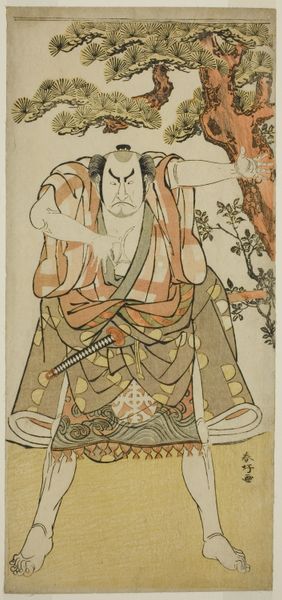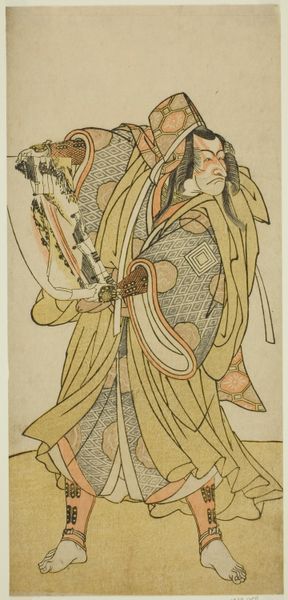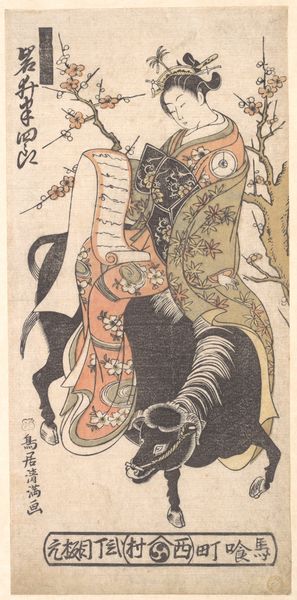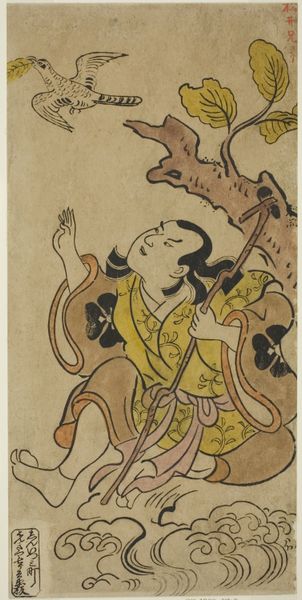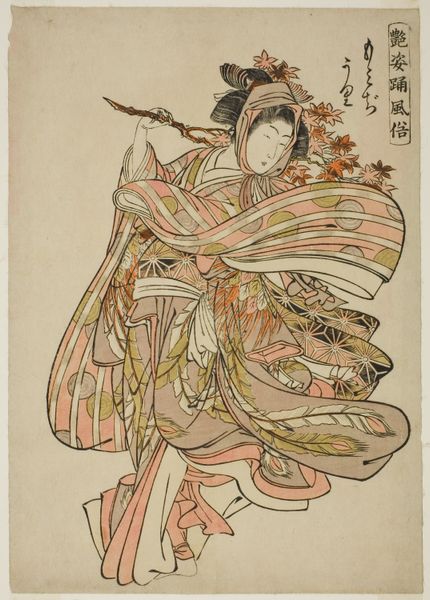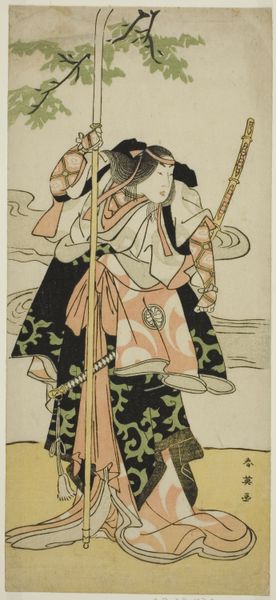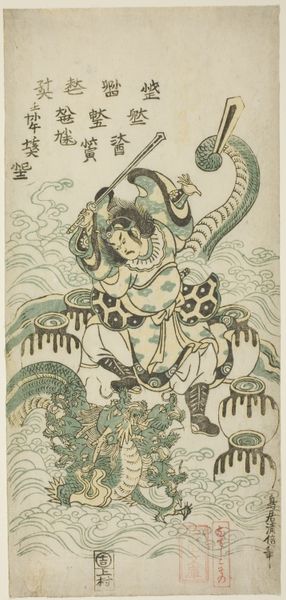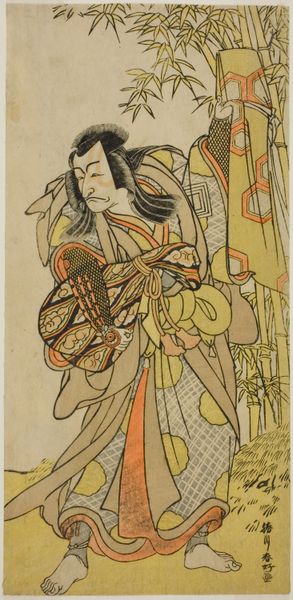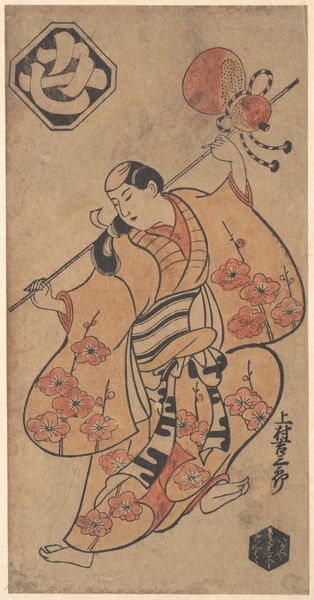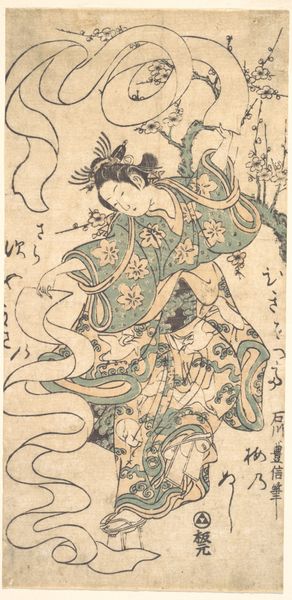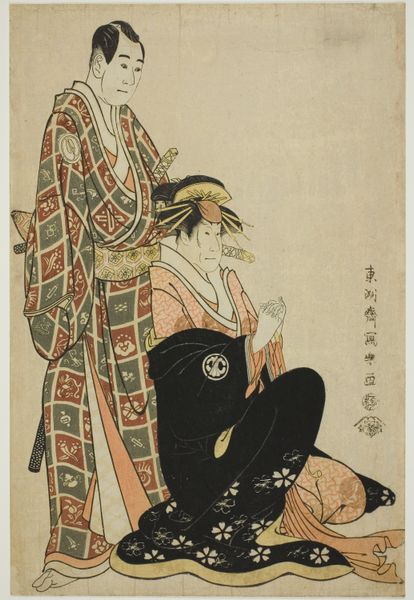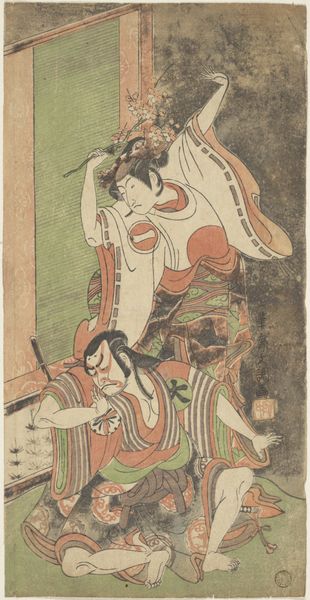
The Actor Nakamura Nakazo I as Toyose Saburozaemon Kageaki in the Play Hono Nitta Daimyojin, Performed at the Morita Theater in the Seventh Month, 1777 c. 1777
0:00
0:00
print, woodblock-print
#
portrait
#
ink drawing
#
ink painting
# print
#
asian-art
#
ukiyo-e
#
figuration
#
woodblock-print
Dimensions: 31.1 × 14.7 cm (12 1/4 × 5 13/16 in.)
Copyright: Public Domain
Katsukawa Shunko captured the actor Nakamura Nakazo I as Toyose Saburozaemon Kageaki in this woodblock print from 1777. The actor, adorned in elaborate costume, stands poised above swirling waters, a depiction rife with symbolism. The water motif, ubiquitous in Japanese art, transcends mere representation; it embodies the fluidity of life, the depths of emotion, and the ever-changing nature of existence. Observe how the figure's stance and expression evoke a sense of internal conflict, a struggle mirrored in the tempestuous waters beneath. The orb above his head, reminiscent of a halo, yet unattached, suggests a quest for enlightenment, or perhaps a divine burden. This motif of the burdened hero resonates across cultures and epochs. Think of the stoic figures in classical Greek tragedies, or even the tormented souls in Renaissance paintings, each grappling with fate and their own mortality. The human psyche, it seems, is forever drawn to these narratives of struggle and transcendence, finding solace in the shared experience of the human condition. These archetypes are not fixed; they evolve, morphing to reflect the anxieties and aspirations of each new era. What remains constant, however, is the emotional power they wield, engaging us on a subconscious level and reminding us of the eternal drama unfolding within us all.
Comments
No comments
Be the first to comment and join the conversation on the ultimate creative platform.
